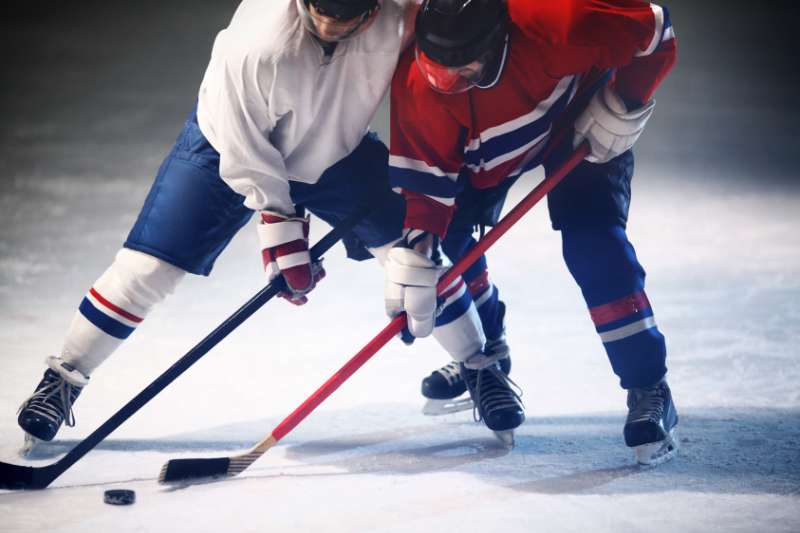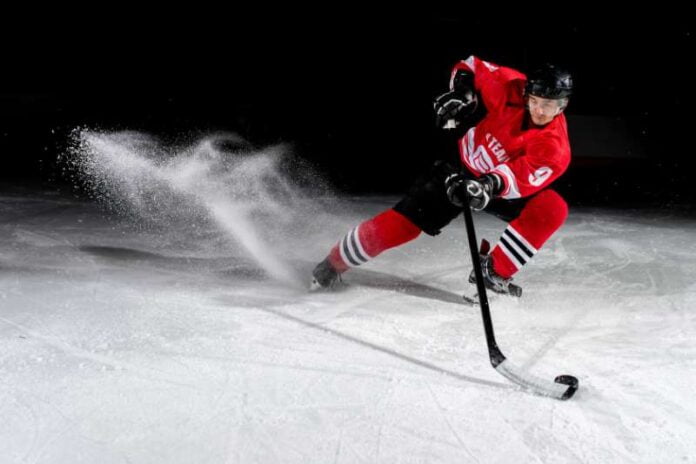Ice hockey drills for beginners focus on fundamental skills like skating, puck handling, and shooting. These exercises lay the groundwork for player development and team play.
Ice hockey, a fast-paced and physically demanding sport, requires players to master basic skills to excel on the ice. For beginners, starting with simple drills that emphasize skating proficiency, puck control, and basic shooting techniques is essential. Engaging in these foundational drills not only boosts a player’s confidence but also ensures they are well-prepared for more complex strategies and gameplay.
Coaches often prioritize drills that enhance balance and agility, as these are crucial for maneuvering during games. By consistently practicing these beginner drills, players can build a solid skill set that will serve as a springboard for their ice hockey journey.
Ice Hockey Drills For Beginners – The First Step On The Ice
Choosing the right skates is crucial for beginner ice hockey players. It’s the foundation of every move you make on the ice. Skates should fit snugly, with just enough room to wiggle your toes. Remember, skates that are too big can cause blisters and lack of control, while ones that are too small can lead to discomfort and foot problems.
For tying skates, follow these steps: Pull the laces tight, but not too tight, from the bottom up. Ensure you have a secure fit around the ankles. This prevents your foot from moving inside the skate. A good knot at the top will keep everything in place. Double-knotting is a good practice to avoid laces coming undone on the ice.

Fundamental Skating Techniques
The basic stance in ice hockey is crucial for beginners. Keep your knees bent and feet shoulder-width apart. Balance your weight evenly on both skates. Stay low to the ice for better stability.
For the forward stride, push off with one skate while the other glides. Use your whole foot for power, not just the toes. Keep strides smooth and consistent. Remember to alternate legs to maintain speed and balance.
Building Blocks Of Puck Control
Stick handling basics are key for ice hockey beginners. You need good skills to control the puck. Practice is important to get better. Try to touch the puck with soft hands. This means you should move the puck without losing it. Keep the puck close to you at all times.
For puck protection drills, use your body. Shield the puck from others. You can practice by keeping your body between the puck and a friend. This helps you learn to keep the puck safe. Do these drills often to become a pro at protecting the puck.
Passing And Receiving: Sharing The Puck
Executing accurate passes in ice hockey is essential for beginner players. To improve, focus on keeping your stick low and your eyes up. Practice by aiming at a specific target, such as a cone or mark on the boards. This helps develop precision. Make sure to push the puck firmly to ensure it reaches your teammate without interruptions.
Catching passes with confidence also matters. Beginners should keep their stick on the ice and watch the puck as it approaches. Absorb the puck’s momentum by slightly pulling your stick back when the puck hits it. This technique reduces the impact and helps maintain control. Regular practice with a partner will boost your receiving skills and build confidence during games.
Shooting Skills: Scoring Goals
Wrist shot techniques are essential for scoring in ice hockey. Begin with the basics: position your body correctly with feet shoulder-width apart. Focus on your grip. Your lower hand should control the stick’s movement. Practice the motion without a puck to build muscle memory. Start slowly, then increase the speed as you become more comfortable.
For slap shots, balance and timing are key. Place your weight on the back foot and transfer it forward as you shoot. The stick should hit the ice before the puck, creating a slapping sound. Follow through with your shot, aiming at the net’s corners. Repeat these drills to improve your slap shot accuracy and power.
Defensive Moves For Beginners
Defensive moves are crucial for ice hockey beginners. Proper positioning is the foundation. Players must understand where to stand on the ice. They should learn to anticipate the opponent’s moves. This skill helps in cutting down passing lanes and blocking shots.
Angling is another key aspect. It involves guiding the attacker towards less dangerous areas. By doing so, players can control the play and force turnovers.
Effective stick checks can disrupt the puck carrier. Beginners should practice poke checks and sweep checks. Body contact is a part of defense too. New players must learn to use their body to protect the puck and separate opponents from the puck safely.
Playing Smart: Understanding The Rules
Understanding common penalties is key for beginners in ice hockey. Holding, tripping, and high sticking are some you should avoid. These actions can lead to penalties which will put your team at a disadvantage.
Learning team play and positions is also important. Each player has a role. Forwards focus on attack, defensemen protect the goal, and the goalie guards the net. Working together leads to better results and more fun on the ice.
Frequently Asked Questions
What Are The Passing Drills For Beginners In Hockey?
Beginner hockey passing drills include stationary partner passing, moving partner passing, pass and follow, triangle passing, and obstacle passing to enhance accuracy and coordination.
How To Improve Hockey Skills For Beginners?
To improve hockey skills, beginners should practice skating regularly, master basic stickhandling, and engage in puck control drills. Shooting techniques and game strategy understanding are also crucial. Consistent training and watching professional matches will enhance overall gameplay.
How Can I Make Hockey Practice Fun?
To make hockey practice fun, incorporate games, use varied drills, and encourage friendly competition. Allow players to give input on activities, and ensure everyone gets involved. Celebrate successes and keep the atmosphere positive.
How To Get Started In Ice Hockey?
Begin by learning to skate; it’s fundamental in hockey. Next, equip yourself with essential gear: skates, helmet, stick, and protective padding. Join a local hockey clinic or class to understand rules and techniques. Practice regularly and consider joining a recreational league to gain experience.
Conclusion
Starting with basic ice hockey drills can significantly enhance a beginner’s skills and confidence on the ice. Practice these drills regularly and watch your gameplay improve. Remember, every expert was once a beginner. So, lace up your skates, hit the ice, and start mastering these fundamentals today!


